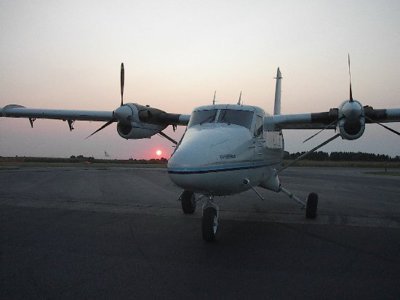-
Content
5,695 -
Joined
-
Last visited
-
Feedback
0%
Article Comments posted by diverdriver
-
-
What David said. Jim was killed in a motorcycle accident about 1994 I think. I started diver driving at Harrisonville, MO (Horizon Skydiving) and made my first jump at Independence (Greater Kansas City Skydiving Club) in 1995. Jim I believe died a year earlier.



You Know Nothing About Seatbelts - Part 2
in General
WHICH IS THE EXACT POINT OF THIS ARTICLE.
From the NTSB:
"The operator provided weight and balance information, individual occupant weights, and a seating plan for the accident flight. The maximum gross weight for the airplane was 3,300 pounds and the aft center-of-gravity (cg) limit was 47.27 inches aft of datum.
Weight and balance figures for the accident flight were computed at a fuel weight of 60 pounds. Preliminary calculations revealed the airplane weighed 3,060 pounds with the cg at 48.30 inches aft of datum.
A weight and balance was also computed using the same figures, minus the first parachutist that departed the airplane. The calculations revealed the airplane weight to be about 2,898 pounds, and the cg 48.76 inches aft of datum."
http://www.ntsb.gov/_layouts/ntsb.aviation/brief2.aspx?ev_id=20001212X18790&ntsbno=IAD99FA043&akey=1
Why is it being used to show seatbelts prevent movement in flight? Well, sir, if they had seatbelts on they couldn't have moved to get out! Thus preventing the inadvertent stall/spin entry after engine failure. They were below 1,000 feet AGL.
A witness statement: "The plane came straight down. There was no forward motion. He had all that field in front of him. Why in the heck he didn't get the nose down, I don't know."
CG.
And a personal tale if you'll indulge me. I was a jumper in a 206. We all took our seatbelts off at 1k like every one ever did. The pilot had no instrument rating and I didn't expect her to fly into clouds. But I always wore my helmet the entire flight to altitude. Well, the pilot entered a cloud on climb and panicked. She shoved the controls forward and all of us unbelted jumpers went to the ceiling. She came out of the bottom of the cloud and saw we were diving. She pulled back and we slammed to the floor. This sudden weight slamming the floor caused the plane to pitch up sharply and re-enter the cloud. She shoved again and we went to the ceiling. We went floor to ceiling to floor three times before recovering. Had we been belted in still the loss of control would have been less severe if not all together absent due to load shift. I was the only jumper who didn't injure their head. So yah, maybe we should be considering wearing seatbelts to a higher altitude like just before gear checks happen before exit. Why take them off at 1k? If you can't get out of the restraint quickly then it was improperly worn.